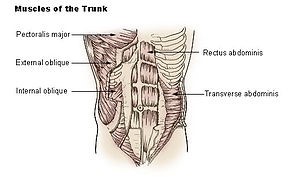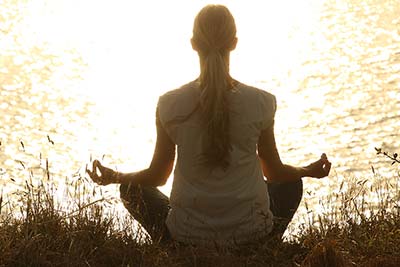In our modern day society we have become very focused on our abdomen looking hard and flat; however, did you know it is estimated that only 10 per cent of the population are genetically able to achieve this. The fat around the stomach is called visceral fat and it acts as storage and cushioning for the digestive organs, therefore it does take an incredible amount of work to convince the body that this cushioning is not required.
The abdominals muscles perform a wide variety of functions that are important for our daily life. They keep the torso erect, stabilise the pelvis, hold our digestive organs in place, give support to our lower back and assist with breathing. Strong abdominals muscles are important for core stability, however there is no one set of muscles that do this alone, the contributing muscle groups are required to assist not only for strength but also flexibility.
It is important that we have a well-rounded approach to keeping our core structure strong and work on all areas of our body to support this. With this in mind, you can still do some postures that isolate particular abdominal muscles to make them stronger for various reasons. I have given you some information below and a couple of postures that work on each particular area. So lets not think hard and flat, but toned, strong and healthy.
The Anatomy and Structure of your Abdominal muscles & Yoga Postures
The abdominals are quite complex; there are four layers of muscles that perform different functions, in saying this, all of them are involved in drawing in the abdomen.

Transverse abdominus– the deepest layer, running across the abdomen one hip to the other. Its main function is to draw the abdomen in when we breathe, cough, sneeze laugh, defecate and assist with childbirth. It is strengthened when we draw the navel centre inwards.
How to Strengthen
- Sphinx Roll up- come into sphinx by laying face down on the floor, come up onto the elbows with them directly under your shoulders, forearms out in front, palms facing down. Thighs on the floor along with the top of the feet. Initially chest will be open facing forward. Lift the upper part of the back, and the belly inwards towards the spine, bow your head down as you lift through the lower belly rounding the upper part of the pack up to the ceiling, pushing through the hands and upper part of the feet. Stay here for 3-5 breaths and roll back down and repeat.

Start in Sphinx
Internal and external obliques– these run over the top of the transverse abdominus. The external obliques run from the lower back to the ribs and across the waist to connect to the pelvis, as part of the side waist. The internal obliques run in the opposite direction and lie beneath the external obliques. They twist the torso and bend it diagonally and give support for forward bends.
How to Strengthen
- Spinal roll (Jathara Parvartanasana) – with the knees towards the chest, the shin bones parallel to the floor, the arms extended out to the side at shoulder height, the palms facing down. Squeeze the inner thighs together, take the legs over to one side almost touching the floor but not quite as you exhale. Inhale to centre and repeat on the other side. Inhale to centre exhale as you twist. For a more challenging pose straighten the legs. When completed hug the knees to the chest and rest for a moment.
Rectus abdominus– is the outer most layer and is long and flat, running the entire length from the pubic bone to the breastbone. It is the one that we associate with the “six pack” look when very well defined. It stabilises the torso and bends the spine forward.
How to Strengthen
- Plank (Chaturanga Dandasana)- Come onto your hands and knees, draw the navel centre inwards, straighten your legs, with your body straight like a plank. Ensure the stomach muscles are engaged not letting your back arch, keeping the pelvis up a little. Draw the heels back and away from your body. Hold for as long as possible and then do it once more.

Remember, be careful not to become too engaged in the hype of a washboard stomach, because if they become too tight they can contribute to the loss of the natural curve of our spine pulling the pelvis upward and weakening its structure.
Yoga is concerned with the inner and the outer part of our bodies, aspiring to create wholeness. Always remember, to protect your back, have fun and allow yourself to become alive with energy.
Safety first
If you have not had much experience with abdominopelvic exercises it is important to get to know your body and its limitations. So take it slow and keep your focus inwards and be mindful of the movements and how your body is responding.
High blood pressure, hiatal hernia & stomach ulcers – do not hold your breath at any time, let the breath flow freely and be careful of intense exercises.
Lower back injuries– protect your back always by keeping it on the floor and using abdominal muscles only.
If in doubt seek a practitioner who is willing to assist you.
Come to one of my classes, I would be happy to guide you.


Leave A Comment